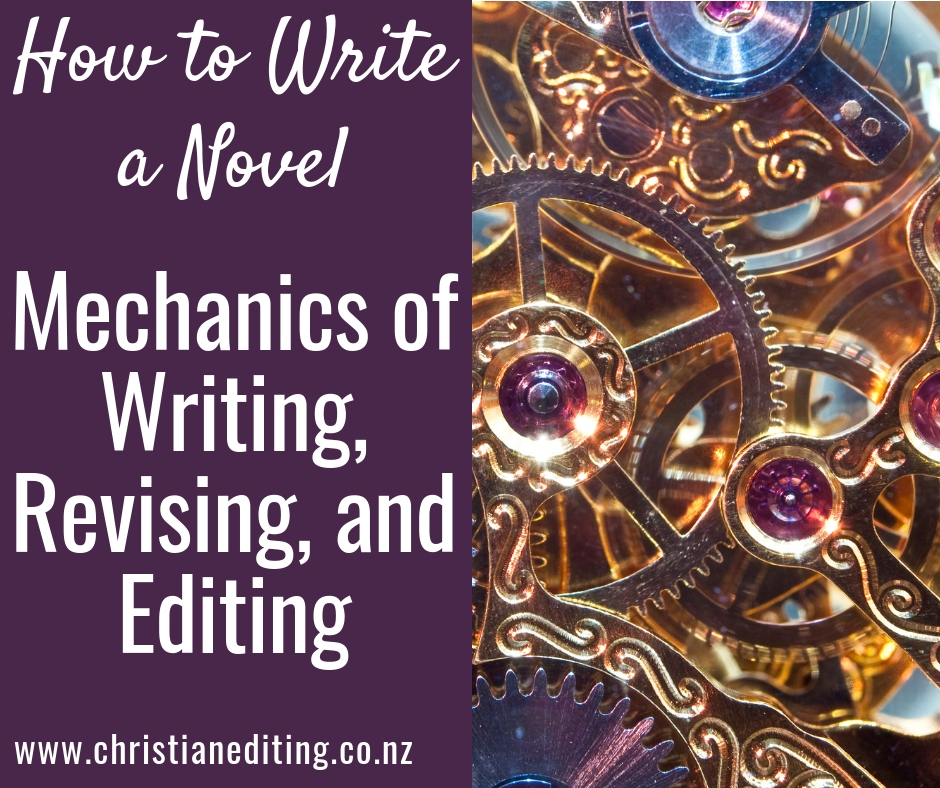Point of view is one of the most important aspects of writing craft for fiction, yet it one of the major issues new writers struggle to understand.
This post will:
- Describe the basic approaches to point of view.
- Discuss how to choose the right point of view for your novel.
Approaches to Point of View
The basic approaches to point of view are:
- First person
- Second person
- Third person
First Person
First person uses ‘I’ as the personal pronoun. This takes the reader inside the mind of one character. The reader can only think, see and experience from the viewpoint of this one character:
I sit waiting, waiting, waiting. These might be the Royal quarters, as befits my station as Princess Elizabeth, daughter of King Henry VIII, God rest his soul, but it is still the Tower of London. It is still a prison. Amidst the luxurious wall hangings, a warm fire, and the fine food, I sit here, waiting. Waiting upon the pleasure of the popish Queen. Mary. My half-sister.
My enemy.
First-person point of view gives narrative intimacy, the feeling that they are getting to know this character’s deepest thoughts and emotions. In Self-Editing for Fiction Writers, Browne and King say:
In order to succeed in the first-person point of view, you have to create a character strong enough and interesting enough to keep your readers going for an entire novel, yet not so eccentric or bizarre that your readers feel trapped inside his or her head. Also, what you gain in intimacy in first person, you lose in perspective [because] your readers get to know only one character directly.
Note that some readers don’t like novels written in first person. Some publishers don’t accept first person manuscripts, so choosing this option might limit your market.
Second Person
Second person uses ‘you’ and ‘your’, putting the reader inside the story:
You sit waiting, waiting, waiting. These might be the Royal quarters, as befits your station as Princess Elizabeth, daughter of King Henry VIII, God rest his soul, but this is still the Tower of London. It is still a prison. Despite the wall hangings, a warm fire and the fine food, you are still sitting here, waiting upon the pleasure of the Queen. Mary, your half-sister, your enemy.
This feels contrived to me. You are not Princess Elizabeth, so are you really going to sit through a 90,000 word novel and pretend that you are? Second person works for instructional non-fiction, and is the mainstay of ‘choose-your-own-adventure’ books. But it’s not considered appropriate for novel-length fiction.
In the words of Newman and Mittlemark (authors of the tongue-in-cheek How Not to Write a Novel):
Certain late twentieth-century novelists used the second person singular successfully—notably Italo Calvino in If on a Winter’s Night a Traveler and Jay McInerney in Bright Lights, Big City. But there it ended. In fact, it was named the “second person” when McInerney became the second person to get away with it and it became clear he would also be the last. Very occasionally, an editor sees past the contrivance and buys such a book—on the condition that the author revise it completely into a traditional third-person narrative.
Unlimited or Omniscient POV
Some people see omniscient point of view as one end of a continuum of a range of third person viewpoints. Others see it as unique and separate from third person. It is written using the grammatical rules of third person, and uses he/she and his/her pronouns:
Princess Elizabeth sat waiting in the Royal quarters of the Tower of London as the guard entered with her breakfast. She should be grateful she hadn’t been placed in a normal prison cell. At least the walls of the Royal apartment were covered in fine tapestries to keep the heat in, there was a large fire to fight London’s cold winter, and the food was freshly cooked and still warm when it was served to her.
He knew many people who didn’t have these luxuries at home, never mind in prison. Elizabeth was waiting upon the pleasure of her half-sister Mary, the Catholic Queen.
Mary was afraid of Elizabeth, afraid of her popularity with the common people, and afraid she might fight for the throne as that wretched Jane Grey had. She was dead now. And Elizabeth may yet join her.
The advantage of omniscient point of view is that the reader gains a level of perspective over the whole story, because the narrator knows what is going on in the minds of all the characters.
This was the favoured point of view in the past. However, it can be confusing for the reader (see how the example moves from Elizabeth’s mind to that of the guard, then to off-stage Mary?). Modern fiction prefers a more intimate point of view where the reader can see inside the mind of the main characters—but only one character at a time.
Many readers dislike the omniscient point of view, because it can lead to moralising author intrusions (‘she should be grateful’), and is thought of as old-fashioned and patronising.
The other disadvantage of omniscient is that it is hard to write well. The above example isn’t true omniscient: it’s third person with head hopping. True omniscient point of view has a separate narrator with a distinct voice, as in The Hitchhiker’s Guide to the Galaxy or The Princess Bride.
Outer Limited or Cinematic POV
Outer Limited describes the action through the eyes of an external narrator who sees the external, observable actions and dialogue but none of the thoughts or feelings of the characters. James Scott Bell describes as this as Cinematic POV. For example:
Princess Elizabeth sat waiting in the Royal quarters of the Tower of London. The room wasn’t a typical prison cell: the walls were covered in fine tapestries to keep the heat in, there was a large fire to fight London’s cold winter, and the food was of high quality. Elizabeth sat, waiting upon the pleasure of her half-sister Mary, the Queen, a Catholic, and her enemy.
Like omniscient, cinematic point of view tends to tell rather than show, and doesn’t give the much-needed emotional engagement with the characters. It can be useful in certain circumstances:
- It is often used in thriller and suspense novels to show what is happening away from the sight of the main characters (e.g. the villains making their plans).
- It provides narrative distance, which can be useful when describing certain scenes (e.g. physical violence).
Third Person Limited
Third person inner limited puts the reader in the position of observing the action through the eyes, ears, and thoughts of a single character. It’s much like first person, but written in the grammatical third person language of he/she and his/her.
Note that the reader can only know the thoughts of the point of view character: unless the character is telepathic, the character can only observe the actions of the other characters in the scene:
Princess Elizabeth sat waiting in the Royal quarters of the Tower of London. She knew she should be grateful she hadn’t been placed in a typical prison cell. At least the walls of the Royal apartment were covered in fine tapestries to keep the heat in, there was a large fire to fight London’s cold winter, and the food was as fine as any she had eaten in her Hatfield home: freshly cooked and still warm when it was served to her. She sat, bored, thinking of her half-sister Mary, the Catholic Queen who was now her enemy.
This example feels distant as a reader, as if you’re watching a scene rather than being drawn into that scene. You can see some of what is going on inside Elizabeth’s head, but words like ‘knew’ and ‘thinking’ place an invisible narrator between the character and the reader.
Like Cinematic point of view, Inner Limited has some uses in modern fiction, but can feel distant when it fails to engage the emotions of the reader.
Third Person Deep Perspective
Modern readers favour a more intimate third person (especially in genres such as romance and women’s fiction), as this pulls the reader into the scene and provides a degree of narrative intimacy and emotional engagement more like first person:
She sat, drumming her fingers on the desk. These might be the Royal quarters, befitting her station as Princess Elizabeth, daughter of King Henry VIII, but it was still the Tower of London, still a prison. She gazed around the room. Perhaps the view had changed. No. Still the same wall hangings, showing that awful hunting scene. The poor stag. It hadn’t deserved to meet that grisly end at the hands of her father. That was back when he was married to Catherine of Aragon, before he split from the Roman Catholic church to divorce Catherine and marry Elizabeth’s mother.
At least the fire was warm and the food was as good as that served in her Hatfield home. But there was nothing to do. No new books, nothing to sew, and no one to talk with. It was luxury compared with the hovels most people lived in, but it was a prison. So she sat, praying, watching, waiting. Waiting upon the pleasure of her half-sister Mary. The Queen. Her enemy.
The reader should be able to feel Elizabeth’s boredom and impatience. If this was done really well, the reader would also be able to sense Elizabeth’s underlying fear: that she may have to die in order for Mary to secure her throne. That is the beauty of deep perspective: done well, it shows us things the character themselves may not even be aware of. But the example above also shows one of the problems of deep perspective. It takes more words to show than to simply tell.
Choosing The Right Point of View
How do you choose which point of view to use? In modern fiction, the only real choice is between first person and third person.
Genre may play a part in your decision:
- Women’s literature and cozy mysteries often use first person point of view.
- Romance novels may be first person or third person.
- Thrillers or suspense are usually third person.
- Middle Grade novels are likely to be third person, and may use omniscient or cinematic viewpoint.
- Young Adult and New Adult novels tend to be first person or third person deep perspective.
- Fantasy novels are likely to be third person, and may use omniscient.
Overall, most adult fiction uses third person point of view. The more character-driven the plot, the more likely the novel will use third person deep perspective. Browne and King say:
What degree of narrative distance is right for you? Broadly speaking, the more intimate the point of view, the better. One of the most difficult tasks racing a writer is creating believable and engaging characters, and an intimate point of view is a terrific way of doing this.
Using Multiple Points of View
Most novels are written using multiple points of view, as this provides variety and interest. However, multiple points of view can get authors in trouble.
There are three main ways of using multiple points of view in fiction:
- First person point of view with multiple characters.
- Combining first person and third person point of view.
- Third person point of view with multiple characters.
Multiple characters in first person is not a technique for beginners. Done well (e.g. Gone to Ground by Brandilyn Collins), it is excellent. Done badly, it is virtually unreadable. As Browne and King say:
[some authors] write in the first person but from several different viewpoints—with different scenes done from inside the heads of different characters. This technique can be highly effective in the hands of an experienced writer.
Orson Scott Card explains the problem in Characters and Viewpoint:
Switching first-person narrators mid-story is usually ineffective and always difficult, because it violates the illusion that the character is “really” telling the tale.
Gayle Roper uses the technique of combining first person and third person successfully in Shadows in the Sand. She uses first person for her heroine, and third person for two secondary characters and for the villain. This is not a technique for beginners, because the constant change between first person and third person can draw the reader out of the story.
This is why most authors stick with the tried-and-true options:
- Writing first person from a single point of view.
- Writing multiple characters in third person point of view.
Choosing Your Point of View Characters
The final question in is how many point of view characters your novel should have.
Fewer is better:
- If you are writing in first person, the ideal number of viewpoint characters is one (unless you’re an expert writer).
- If you are writing in third person, the number of viewpoint characters will vary depending on word count and genre.
The purpose of point of view is to create intimacy with the characters, to make the reader care about what happens to the character. These guidelines are based on what I see as a reader:
- Category romance (e.g. Love Inspired, approximately 60,000 words) has two points of view: hero and heroine, with approximately a 40/60 split between the two.
- Contemporary or historical romance, women’s fiction (90,000 words) has two or three points of view: hero, heroine and significant other character. This may be a best friend, or it may be the heroine of the planned sequel.
- Romantic suspense (90,000 words) has between two and four points of view: hero, heroine, significant other character and villain.
- Thriller (90,000 words) may have up to five characters hero, heroine (if there are romantic elements) and two or three seemingly-unrelated viewpoints, one or two of which will be the villains.
- Science Fiction or Fantasy (up to 120,000 words) will have up to five characters: hero, heroine, sidekick, mentor, villain
Each character is someone you want your reader to get to know, to understand. If you have too many viewpoint characters, you reduce the ability of your readers to know and understand your characters and their motivations. As Ronald Tobias says in Twenty Master Plots:
The more characters you add to the mixture, the more difficult it will become to keep up with all of them and to keep them in the action.
Three Golden Rules of Point of View
The general rules of Point of View are:
- There must only be one point of view character in each scene (more than one is referred to as ‘head-hopping’).
- The point of view character should be the individual most affected by the actions in that scene.
- The first name mentioned in a scene should be that of the viewpoint character.
In almost every case, the viewpoint character should be one of the main characters. It won’t be a minor character who only appears on one or two scenes in the entire book. The exception might be if you’re setting this character up to be the protagonist in the next book in a series.
I’ll be back next week to discuss the most common problems new writers have, and how the correct use of point of view can help. Meanwhile, what’s your biggest struggle with point of view? Let me know in the comments.



